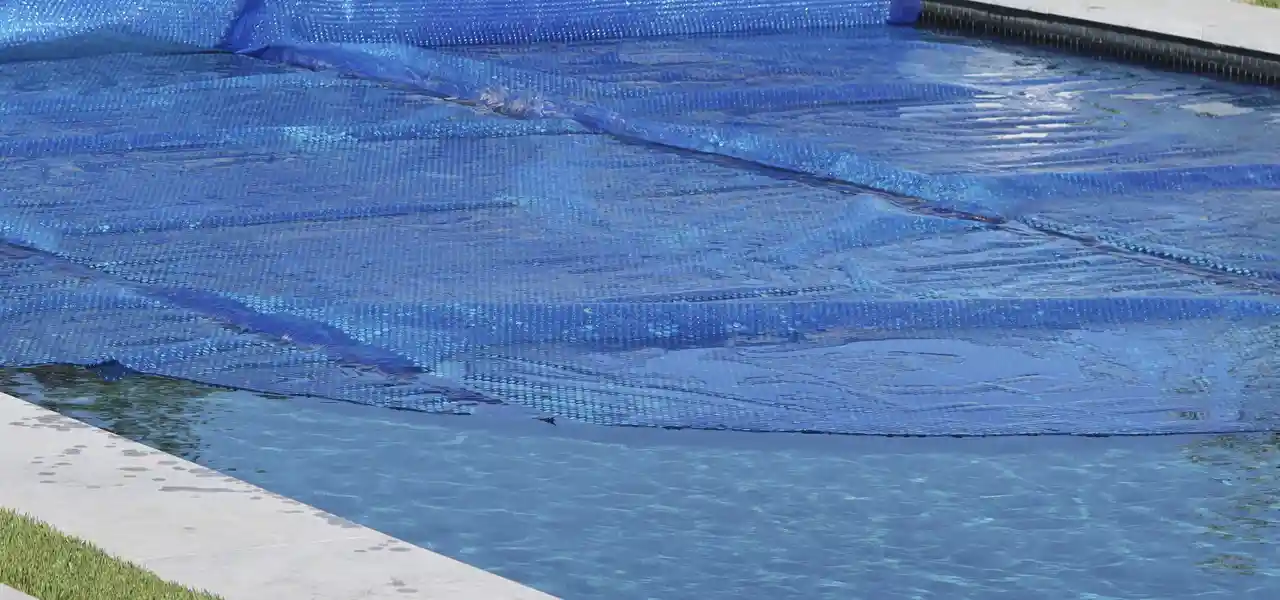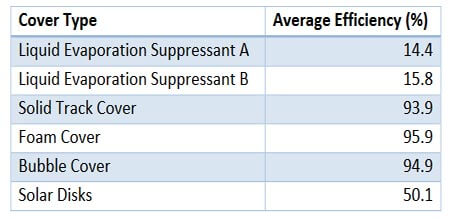FREE Standard Shipping On All Orders $100 or More!*

How Effective Are Solar Pool Covers?
A solar blanket helps to both heat the water, and retain the heat at night, or prevent heat loss from cool air temps or heat robbing winds.
Solar covers will add heat to the pool to a greater or lesser degree, depending on 1) amount of surface coverage and 2) amount of direct daily sunshine. For a pool that is completely covered by a solar blanket, and one that gets at least 6 hours of direct sunlight on the pool, a 10-15 degree F gain is not unusual.
Solar covers will also reduce heat loss and evaporation by as much as 95%, depending on 1) amount of surface coverage and 2) average nightly temperature. As nights turn cooler, and the differential between water temp and air temp increases, it becomes less effective at reducing heat loss, but still is the best way to do it!
Studies on Solar Cover Effectiveness
2014 research produced a study by Colgate University on the use of a pool cover for 7 hours each night with the result of energy cost savings of over 30%, for the Lineberry pool on campus. And in 2012, A Michigan Energy Office case study on Chesaning Union Middle School pool showed a 50% reduction in energy use, with the unexpected benefit of reducing humidity inside the indoor pool structure. A study in Australia as early as 1963, showed that 'clear plastic film' could be used to both halt evaporative heat loss, and for sunny outdoor pools, would also absorb solar radiation to warm the water.

A 2016 study by Cal Poly was performed on 12 test pools to measure the evaporation control effectiveness of solar covers, solar rings and liquid solar blanket. They did not measure energy savings or heat gain, but instead focused their efforts on helping pool owners control pool water evaporation, a big issue in drought ridden California.
The results of the study, summarized in the chart shown here, was that automatic covers, solar covers, and foam covers all perform at the same level of effectiveness; about 95% efficient. Solar rings, which leave open and uncovered areas between the round disks, reduced evaporation by about 50%.
Liquid evaporation suppressants, more commonly known as Liquid Solar Blanket or Solar Fish, didn't fare so well, although the researchers denote that high winds and storms during the period may have reduced their effectiveness. Other studies done on chemical films to reduce evaporation have produced higher levels of effectiveness, in the 20-40% range.
Discussion:
The recent Cal Poly study did not measure heat gain or energy savings, although evaporative heat loss could be used as a proxy for energy costs. It is conceivable that Solar Rings could have a greater BTU heat input than solar blankets, since they are thicker than solar covers. In fact, manufacturers claim that Solar Rings do have greater BTU heat transfer than Solar Blankets, but this was not tested.

Other questions come to mind, such as; what is the effect of blanket color on heat transfer. How do Clear, Blue or Silver Reflective solar blankets compare to each other? And what about the thickness of the solar blanket (or Solar Rings which are much thicker and presumably longer lasting); does a thicker solar blanket gain more heat or prevent more evaporative heat loss? And could a Liquid Evaporation Suppresant possibly be formulated that would also absorb solar radiation; adding heat to the pool water?
Perhaps further solar pool cover studies will answer these questions. Many thanks to the Cal Poly researchers, and the NPC for funding such a fine consumer-centric study, that will surely be cited in future research for decades to come.
Conclusion: Solar Covers do really work! Both to retain heat and reduce humidity, and when used on outdoor pools, they also add heat to the pool (Liquid Solar does not add heat). There seems to be a bit of a trade-off in convenience for effectiveness within this product category. There's no apparent shortcut, the larger, bulkier solar pool covers just do a better job!